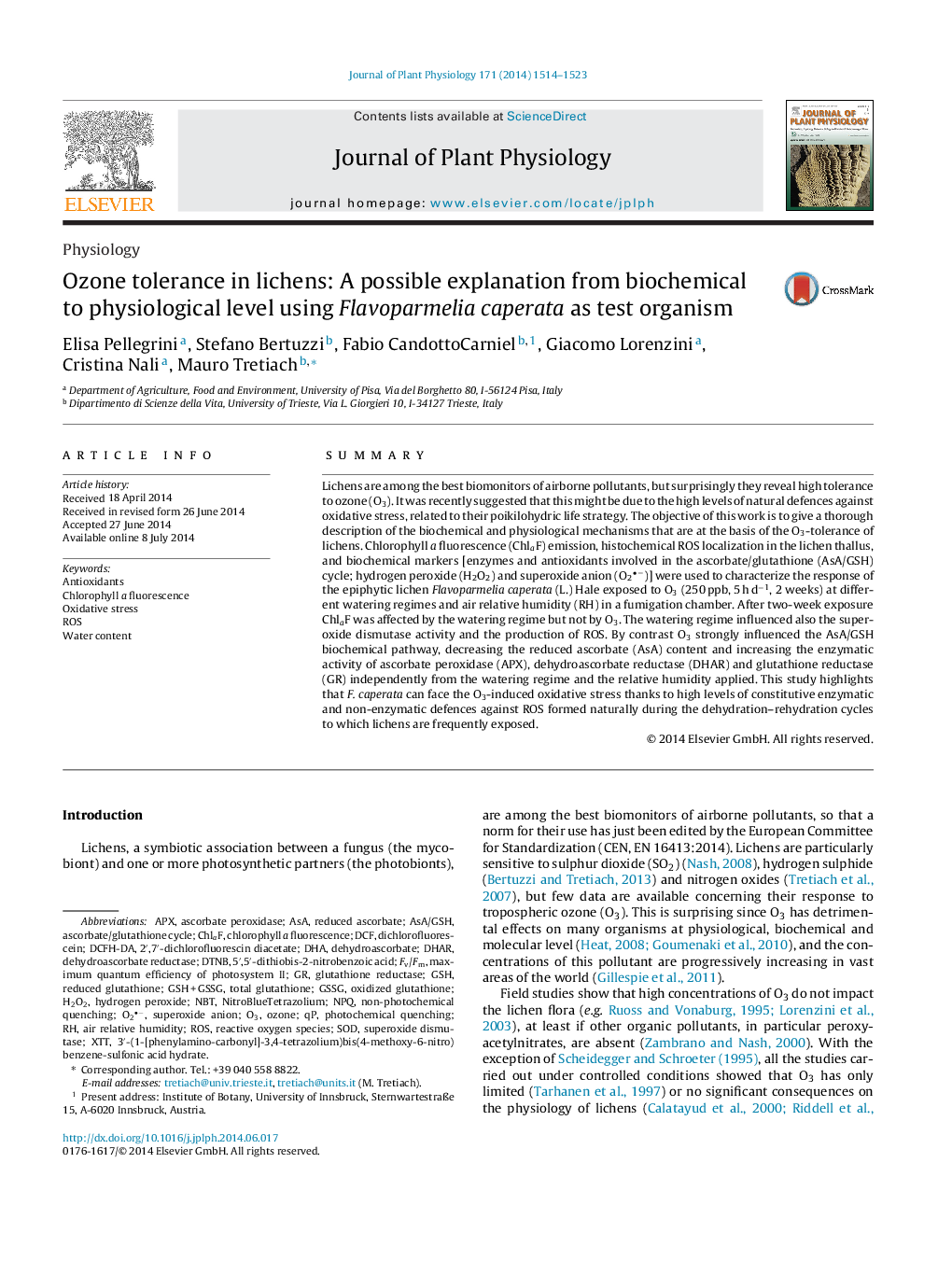| کد مقاله | کد نشریه | سال انتشار | مقاله انگلیسی | نسخه تمام متن |
|---|---|---|---|---|
| 2055809 | 1075777 | 2014 | 10 صفحه PDF | دانلود رایگان |

SummaryLichens are among the best biomonitors of airborne pollutants, but surprisingly they reveal high tolerance to ozone (O3). It was recently suggested that this might be due to the high levels of natural defences against oxidative stress, related to their poikilohydric life strategy. The objective of this work is to give a thorough description of the biochemical and physiological mechanisms that are at the basis of the O3-tolerance of lichens. Chlorophyll a fluorescence (ChlaF) emission, histochemical ROS localization in the lichen thallus, and biochemical markers [enzymes and antioxidants involved in the ascorbate/glutathione (AsA/GSH) cycle; hydrogen peroxide (H2O2) and superoxide anion (O2−)] were used to characterize the response of the epiphytic lichen Flavoparmelia caperata (L.) Hale exposed to O3 (250 ppb, 5 h d−1, 2 weeks) at different watering regimes and air relative humidity (RH) in a fumigation chamber. After two-week exposure ChlaF was affected by the watering regime but not by O3. The watering regime influenced also the superoxide dismutase activity and the production of ROS. By contrast O3 strongly influenced the AsA/GSH biochemical pathway, decreasing the reduced ascorbate (AsA) content and increasing the enzymatic activity of ascorbate peroxidase (APX), dehydroascorbate reductase (DHAR) and glutathione reductase (GR) independently from the watering regime and the relative humidity applied. This study highlights that F. caperata can face the O3-induced oxidative stress thanks to high levels of constitutive enzymatic and non-enzymatic defences against ROS formed naturally during the dehydration–rehydration cycles to which lichens are frequently exposed.
Journal: Journal of Plant Physiology - Volume 171, Issue 16, 15 October 2014, Pages 1514–1523